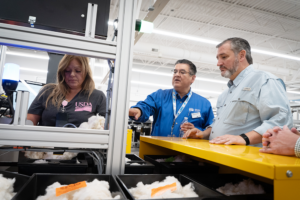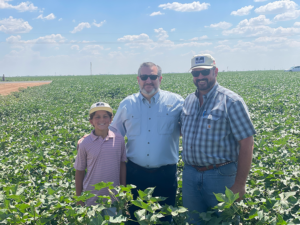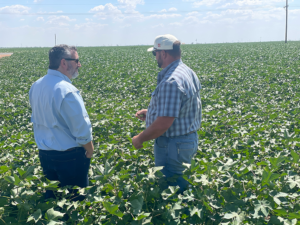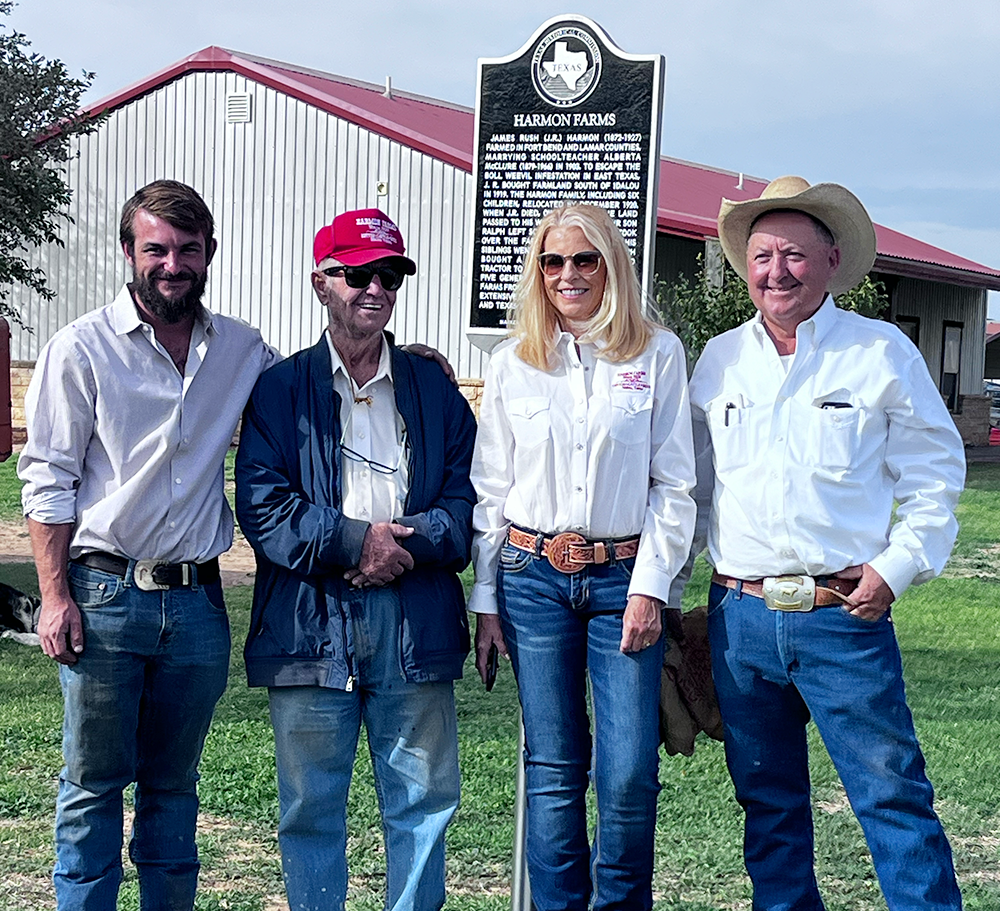
Welcome to the November 3, 2023 issue of Cotton News, a service provided by Plains Cotton Growers Inc. for the cotton industry in the Texas High Plains and beyond.
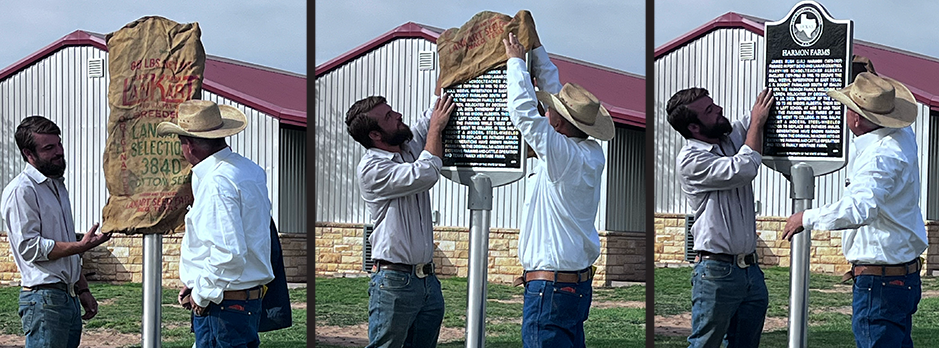
Guy Harmon and his father, Scott, unveil the Lubbock County Historical Commission marker for Harmon Farms.
‘It’s About All of Us’ – Family Farms Recognized for 100 Years in Operation
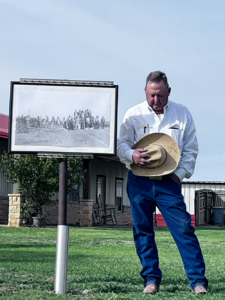
Scott Harmon at the Harmon Farms Lubbock County Historical Commission marker dedication ceremony October 20.
In 1920, land in Lubbock County sold for $62.50 per acre, much to the excitement of a reporter for the Lubbock Avalanche-Journal. He went on to tell his readers the morning of April 8 that a prospector, originally out of Paris, Texas, bought the T.G. Nolley farm in Idalou.
His name was J.R. Harmon. And his 160-acre purchase founded the origins of Harmon Family Farms, established 1920.
His great-great grandson and fourth generation Harmon farmer, Scott, told the Lubbock Avalanche-Journal in 2013 that you have to love farming if you’re going to survive.
“You have to have an intense desire for the job to farm,” he said. “If you don’t have your heart in it, you won’t last.”
I think it’s safe to say that Scott and his son, Guy, have their hearts in it, as they unveiled the historical marker from the Lubbock County Historical Commission on Oct. 21, 2023.
Rather than draped in the traditional black velvet, the marker was covered with a 1920 cottonseed sack to commemorate a century of grit and perseverance. A story that Scott says isn’t just about him.
“This marker has the name Harmon on it, but really it’s about all of us,” Scott said at the dedication. “It’s about our region, our economy, our culture. It’s about all that we do and all that we’ve been through to get to this point.
My friend Don Walker says that you can’t get anywhere by looking through the rear view mirror, but you also can’t get anywhere without knowing where you came from.”
The same article from April 8 mentioned several wind storms — the reporter appeared glad that the West Texas environment had not affected land prices.
“Looks like we were all warned about the wind and dirt out here,” Scott quipped after reading an excerpt of the article at the dedication. “That probably kept the competition down for our ancestors to start these farms.”
Texas Family Land Heritage Ceremony
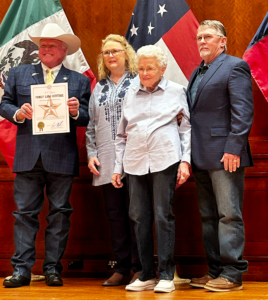
Texas Department of Agriculture Commissioner Sid Miller presents the Mires Family Farm 100-year designation to Janet, Francis and Travis Mires of O’Donnell, Texas, at the Family Land Heritage Center October 18.
The Texas Department of Agriculture held their 49th annual Family Land Heritage Ceremony Oct. 18, 2023. Francis Mires and her son, Travis, accepted the 100-year designation for Mires Family Farm, established 1923.
J.W. Mires and sons, Delbert and Dutch, traveled from Fannin County near Bonham, Texas, via railroad car to Slaton. They brought with them 100 chickens, and 5 each of cows, horses, and mules to farm the place in O’Donnell, Texas, that J.W. had purchased from W.W. and Annie Webb for $40 an acre on October 5, 1923.
They lived in a two-room squatters shack for the first year as they worked to clear the land using the mules. At the end of 1924, they had produced a crop, dug a well, built a 4-room house and bought a Ford Model T.
This homestead had a garage, granary, pens for cattle, horses, and pigs, 7 chicken houses, and a bunkhouse for workers and a cellar that still stands today.
Delbert’s son, Harold, married Francis Reeves in 1950. They took over working the farm and Francis still lives there to this day. Her son, Travis, manages the operation with his sons, Landon and Toby.
“Faith, family and farming have been the cornerstones that have allowed this family farm to survive and prosper in good and bad times,” Travis said. “We want to thank our many friends and neighbors who have helped us along the way.”
West Texas Cotton Quality Report for the 2023 Season
2023 Cotton Quality Report
This is a weekly summary of the cotton classed at the Lubbock and Lamesa USDA Cotton Division Cotton Classing Offices for the 2023 production season.
Lamesa’s average daily number of cotton samples received this week is 1,448. The office is currently 4% complete in the classing of their season estimate of samples.
Lubbock’s average daily number of cotton samples received this week is 10,054. The office is 8% complete in the classing of their season estimate of samples.
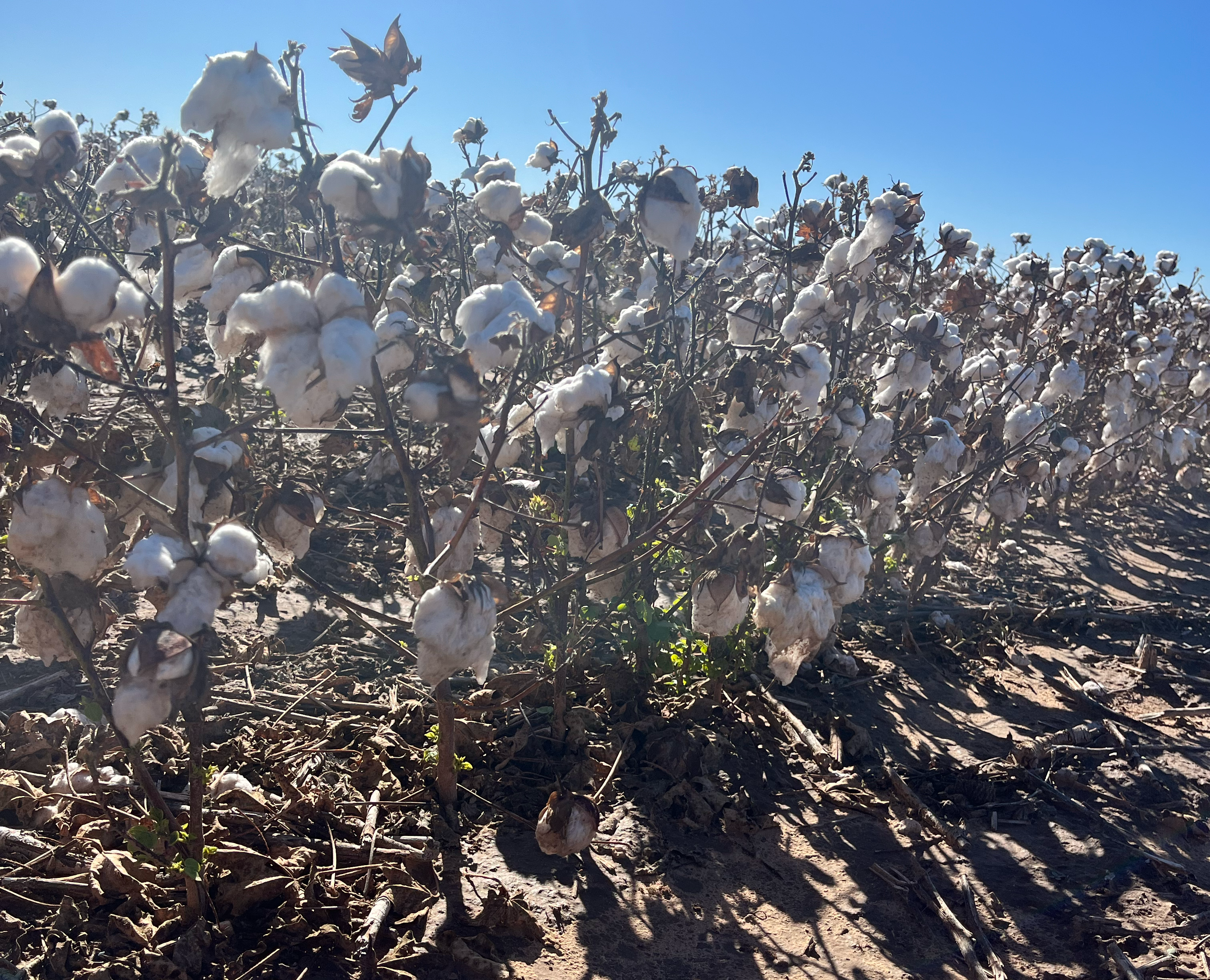


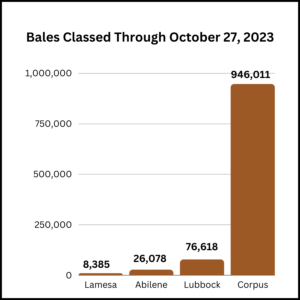


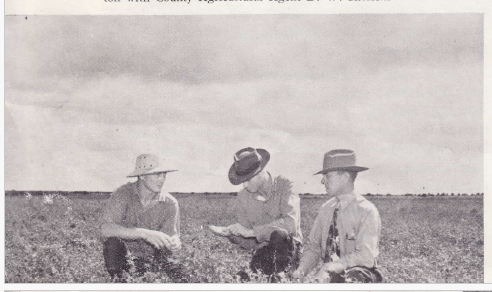
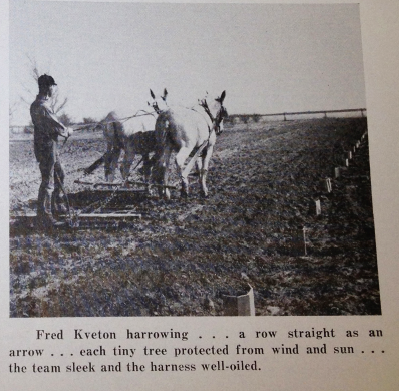
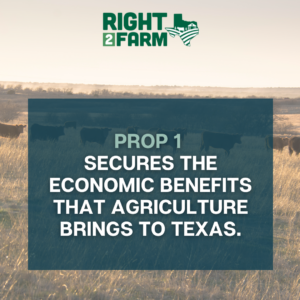 Proposition 1, the Right to Farm and Ranch Amendment, protects the rights of landowners and lessees to engage in commonly accepted agricultural practices on their own properties. Proposition 1 preserves Texans’ access to safe and affordable food for the future by protecting our producers and our state’s agricultural land.
Proposition 1, the Right to Farm and Ranch Amendment, protects the rights of landowners and lessees to engage in commonly accepted agricultural practices on their own properties. Proposition 1 preserves Texans’ access to safe and affordable food for the future by protecting our producers and our state’s agricultural land.
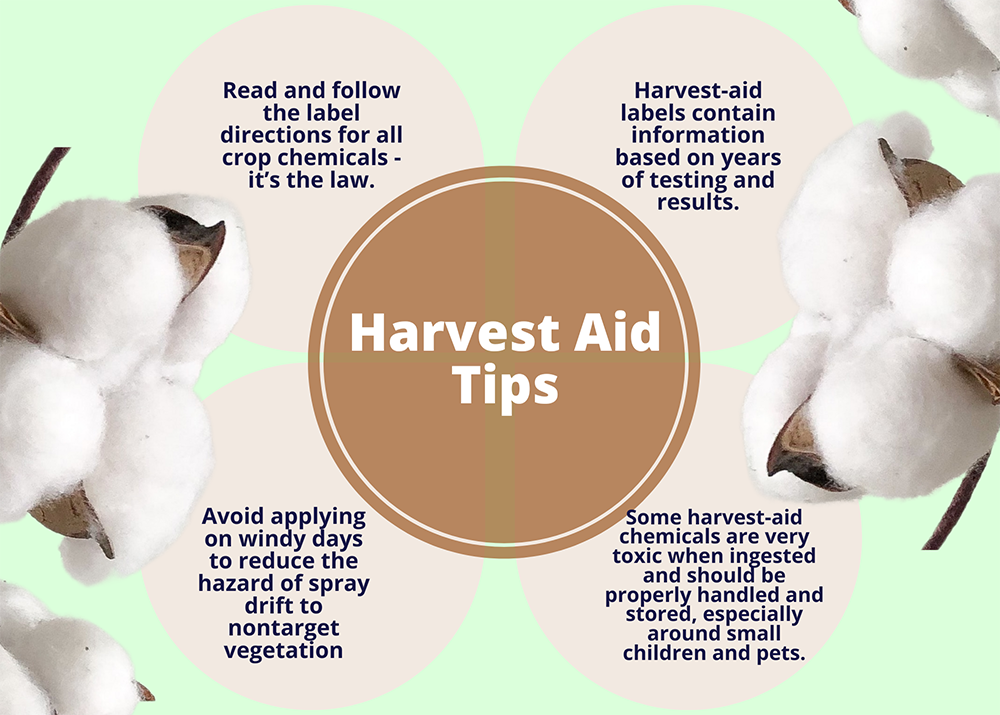







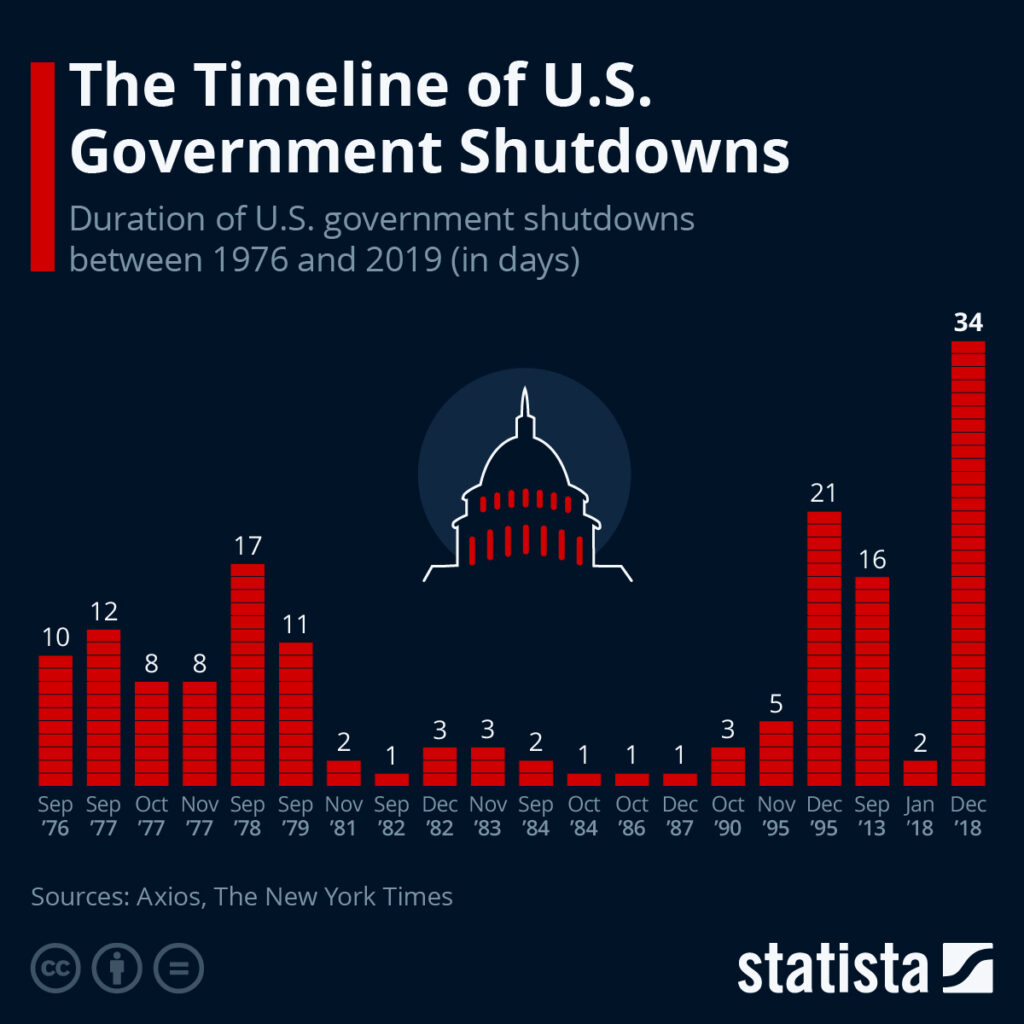



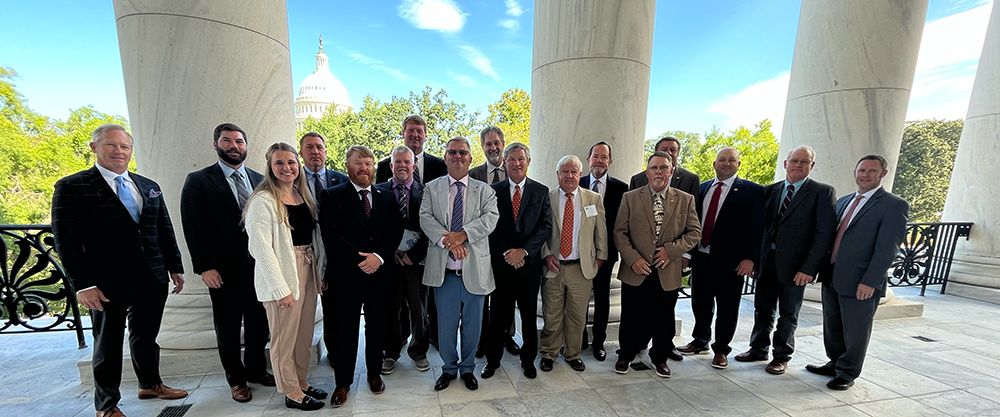
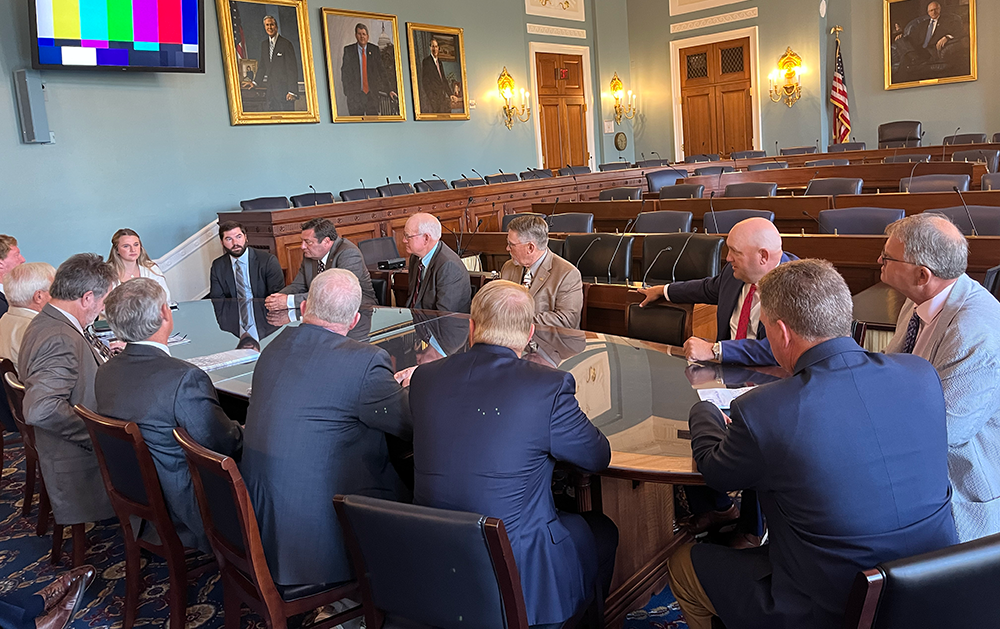



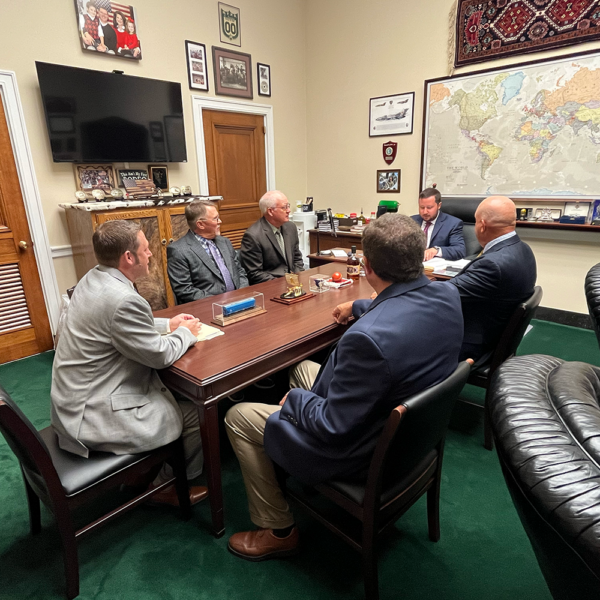
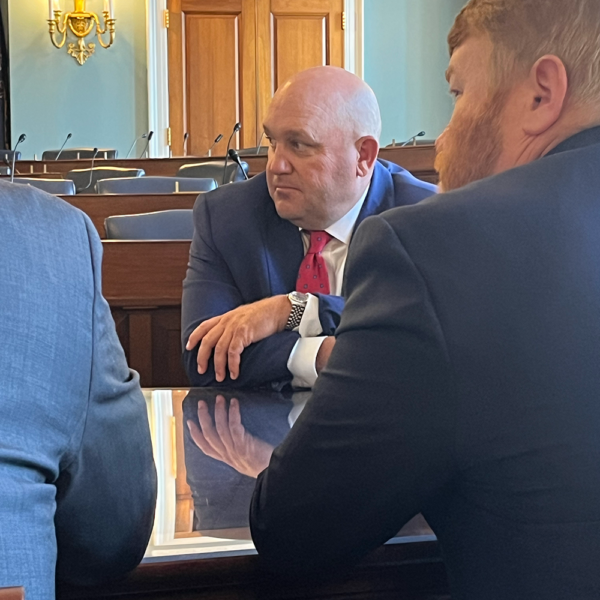

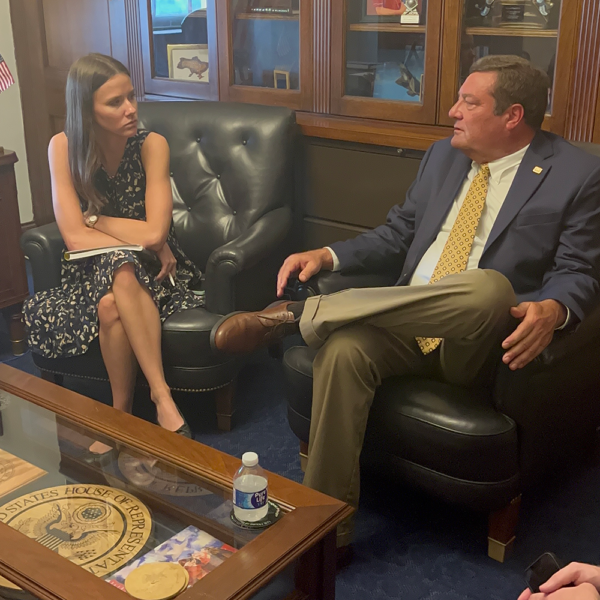

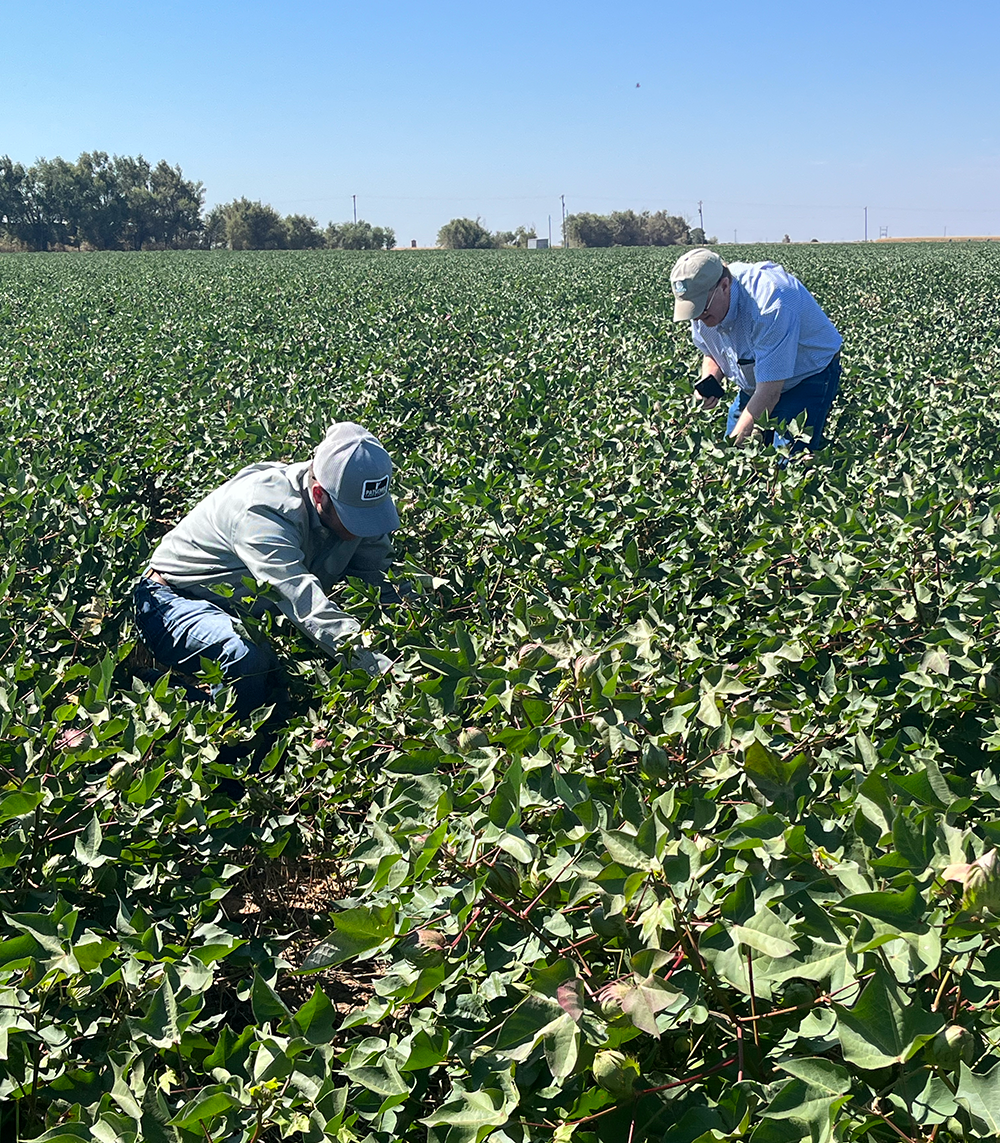
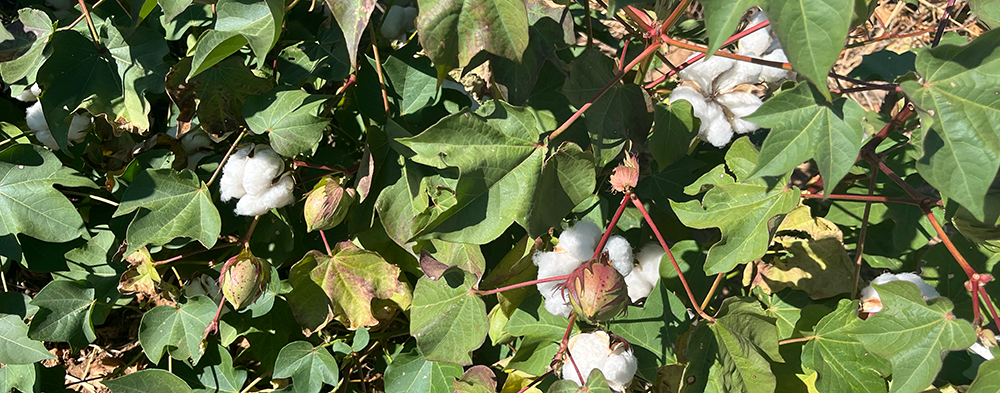








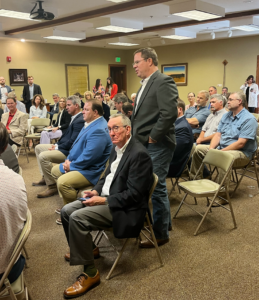 to their livelihood, and by extension, ours. Cotton is unique in that once the cotton is grown and harvested, it relies on a robust infrastructure to process the crop further — larger than that of grains. This cotton infrastructure depends on volume. These last several drought years where the volume has been down has hurt infrastructure, particularly the ginning industry, with no way to benefit from crop insurance as the producer does. If there is any meaningful way to include infrastructure in the Farm Bill, that would be helpful in supporting the cotton industry as a whole,” said Eric Wanjura, president and CEO of Farmers Cooperative Compress.
to their livelihood, and by extension, ours. Cotton is unique in that once the cotton is grown and harvested, it relies on a robust infrastructure to process the crop further — larger than that of grains. This cotton infrastructure depends on volume. These last several drought years where the volume has been down has hurt infrastructure, particularly the ginning industry, with no way to benefit from crop insurance as the producer does. If there is any meaningful way to include infrastructure in the Farm Bill, that would be helpful in supporting the cotton industry as a whole,” said Eric Wanjura, president and CEO of Farmers Cooperative Compress.